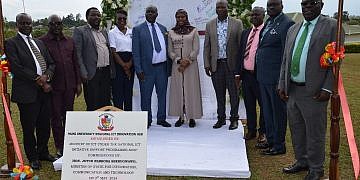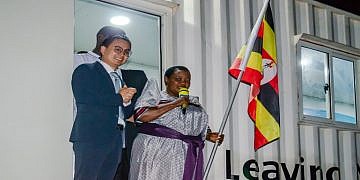At least 26 officers from the African Transition Mission in Somalia (ATMIS) and the Somali Security Forces (SSF) have successfully completed a five-day training programme focused on the planning and coordination of joint operations against Al-Shabaab.
This intensive training, aimed at staff in Joint Operations Centres (JOCs), was designed to equip participants with critical skills necessary for effective operations that align with the mission’s strategic objectives.
Sivuyile Bam, Deputy Special Representative of the Chairperson of the African Union Commission (SRCC) for ATMIS, highlighted the training’s significance in overcoming coordination challenges, improving communication with key stakeholders, and facilitating timely information sharing during mission operations.
“JOC staff are a vital component of the mission’s decision-making process, playing a key role in information management. This training is essential for managing the coordination and communication challenges that are integral to JOC operations,” Bam stated during the training’s opening session on Sunday.
The training was attended by prominent figures, including Maj. Gen. Peter Kimani Muteti, ATMIS Deputy Force Commander in charge of Logistics and Support, and Col. George-Noble Hoenyedzi, ATMIS Chief JOC.
Maj. Gen. Marius Ngendabanka, the acting Force Commander for ATMIS, emphasized that the training would enhance the capacities of the officers while fostering collaboration between ATMIS troops and the Somali Security Forces.
“The JOC staff training aims to develop your capabilities for effective planning and encourage a unified operational approach between ATMIS and SSF, leveraging situational awareness,” said Ngendabanka at the training’s conclusion. He expressed optimism about the newly trained personnel’s potential to impact operations positively.
The training curriculum covered a wide range of topics, including ATMIS JOC’s Standard Operating Procedures, first aid, medical evacuation protocols, JOC functions, communication support, and the prevention of sexual exploitation and abuse. Additional subjects included information security, crisis response, human rights, international law, and incident reporting processes.
Participants acknowledged the training’s crucial role in enhancing their capabilities and coordination during joint operations.
Major Kelvin Wandera from the Sector Two Joint Operation Centre expressed gratitude for the initiative, stating, “The knowledge we have acquired will greatly enhance our coordination with Somali Security Forces during operations.”
Major Aman Wako, Chief of Sector Three Joint Operation Centre, added, “This training will improve our operational capabilities and the effectiveness of our missions in the sector.”
Launched in October 2022, the Joint Operations Centres are integral to strengthening collaboration among ATMIS, SSF, and other partners. This initiative is part of a broader strategy to prepare Somali forces for the eventual transition to full security responsibility once ATMIS concludes its mission.
Notably, Uganda is the largest troop contributor to ATMIS, underscoring its commitment to stability in the region.
The African Union Transition Mission (ATMIS) is set to be rebranded as the African Union Support and Stabilization Mission in Somalia (AUSSOM) in the near future.








































